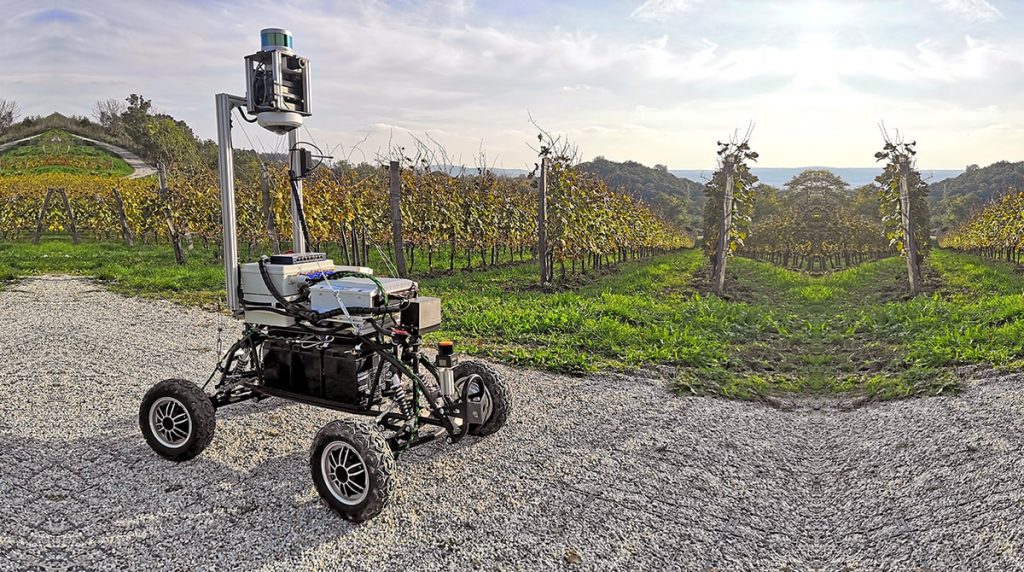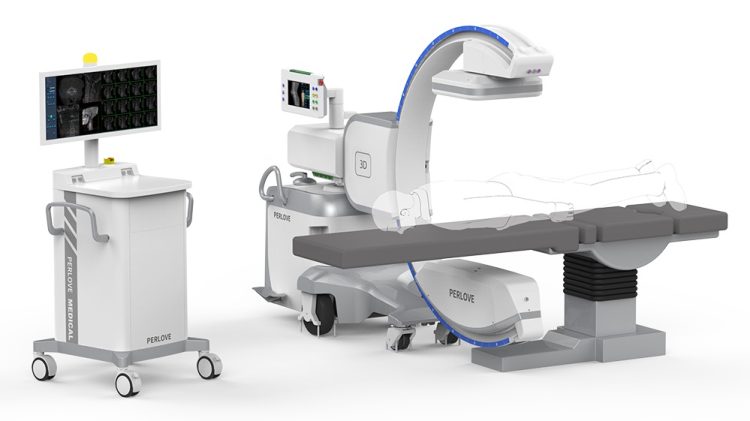Introduction
The ability for robots to autonomously navigate and perform tasks in three-dimensional (3D) space is one of the most exciting and rapidly evolving areas in robotics. Whether it’s a robot performing complex tasks in a dynamic environment, an autonomous drone navigating through obstacles, or a robotic arm carrying out intricate assembly work, 3D navigation is essential for robots to operate effectively in real-world environments.
Robots today are not limited to basic, predetermined pathways or environments; they must now be capable of adapting to complex, unstructured 3D spaces. These environments may include cluttered factory floors, hospitals, urban landscapes, or even the intricate interiors of buildings. Achieving effective 3D navigation requires advanced algorithms, sensory systems, and real-time decision-making capabilities.
This article explores the mechanisms, technologies, challenges, and future prospects of autonomous 3D navigation for robots, focusing on key areas such as sensors, control algorithms, path planning, and practical applications. The focus will be on how robots navigate, perceive, and interact with 3D environments, as well as the challenges they face in doing so effectively.
The Basics of 3D Navigation for Robots
To understand autonomous 3D navigation, it’s important to break it down into several fundamental components:
- Sensors and Perception
Sensors are the foundation of a robot’s ability to perceive and understand its surroundings. Robots rely on a combination of sensory technologies to collect data about the 3D environment, including LiDAR (Light Detection and Ranging), stereo vision cameras, RGB-D cameras (which combine regular color imaging with depth data), and ultrasonic sensors. These sensors help robots map out their surroundings, detect obstacles, and gather data about spatial orientation. - Localization
Localization is the process by which a robot determines its position within a 3D environment. This is critical for ensuring that the robot can accurately track its movements and navigate toward target destinations. Robots often use a combination of odometry (estimating position based on movement) and Simultaneous Localization and Mapping (SLAM) algorithms, which allow them to create detailed 3D maps of their environment while simultaneously keeping track of their own location. - Path Planning
Path planning is the process by which robots determine the best route to take to move from one location to another. This can involve avoiding obstacles, handling dynamic changes in the environment (such as moving objects or people), and optimizing for various factors such as energy efficiency or time. - Control and Decision-Making
Once a robot has generated a path, it needs a system to control its movement and make real-time decisions based on its sensory input. Control algorithms allow robots to follow a planned path while adjusting for unforeseen obstacles or errors in movement. More advanced decision-making algorithms are capable of adapting to unpredictable scenarios by adjusting the robot’s actions in real time.
Key Technologies Enabling 3D Navigation
Several key technologies have enabled significant progress in the field of autonomous robot navigation in 3D space.
1. LiDAR Technology
LiDAR, a remote sensing technology, is one of the most widely used sensors in autonomous robots. LiDAR works by emitting laser pulses and measuring the time it takes for them to return after bouncing off surfaces. This allows the robot to create a highly detailed 3D map of its environment, including detecting obstacles and assessing distances in real time. LiDAR is particularly useful in outdoor environments and is a key component in autonomous vehicles and drones.
2. Stereo Vision and RGB-D Cameras
Stereo vision systems use two cameras to mimic human depth perception. By comparing the images from both cameras, these systems calculate the depth of objects and construct a 3D map of the environment. Similarly, RGB-D cameras provide both color (RGB) and depth data, offering a rich understanding of a robot’s surroundings. These cameras are useful for indoor navigation and tasks that require precise handling and interaction with objects.
3. Simultaneous Localization and Mapping (SLAM)
SLAM is a computational technique that allows a robot to build a map of an unknown environment while simultaneously tracking its own location within that map. SLAM is essential for autonomous 3D navigation because it provides robots with the ability to move through environments without relying on pre-existing maps. It combines input from multiple sensors, such as LiDAR, cameras, and IMUs (Inertial Measurement Units), to generate real-time maps and maintain accurate localization.
4. Machine Learning and AI Algorithms
Machine learning and AI play a significant role in enabling robots to make complex decisions based on their sensory data. AI-driven navigation systems can learn from experience, improving over time by analyzing environmental factors and making predictions. Reinforcement learning, for example, is a powerful AI technique that can be used to teach robots how to navigate by rewarding them for completing tasks correctly and penalizing them for errors.
Challenges in Autonomous 3D Navigation
Despite the advancements in 3D navigation technologies, robots still face significant challenges when navigating complex environments.
1. Dynamic Environments
Real-world environments are dynamic, meaning that they can change unpredictably. Objects move, people walk, and lighting conditions fluctuate. These factors pose a challenge for robots attempting to navigate autonomously. In environments such as warehouses or outdoor areas, robots must continuously adapt to changing obstacles in real time. This requires robust decision-making algorithms that can handle unexpected situations.
2. Localization in Unknown or Unstructured Environments
While SLAM allows robots to map and localize themselves in unknown environments, highly unstructured environments, such as cluttered homes or outdoor areas, can still present difficulties. These environments may lack clearly defined walls or landmarks, which complicates the localization process. Moreover, robots must cope with sensor noise, such as inconsistent readings from cameras or LiDAR, that can lead to inaccuracies in mapping and localization.
3. Obstacle Avoidance and Navigation in Tight Spaces
In 3D navigation, robots often need to move through narrow corridors or cluttered spaces, where obstacles may not always be stationary or predictable. Robots must be capable of accurately detecting obstacles and adjusting their paths accordingly. This requires real-time processing and adaptive control strategies to avoid collisions while maintaining efficiency.
4. Energy Consumption
For mobile robots, energy efficiency is a crucial consideration. Autonomous navigation in 3D space, especially in large, complex environments, can quickly drain the robot’s battery. Optimizing path planning and decision-making algorithms to reduce energy consumption without sacrificing performance is an ongoing challenge. For robots operating in outdoor environments (e.g., drones or autonomous vehicles), weather conditions and terrain variability can further complicate energy management.

Applications of Autonomous 3D Navigation
The ability for robots to autonomously navigate in 3D space is already having a significant impact across a variety of industries. Here are some key applications:
1. Autonomous Vehicles and Drones
Autonomous vehicles (AVs) and drones are among the most well-known examples of robots that rely on 3D navigation to operate. For AVs, 3D mapping and real-time obstacle avoidance are critical to ensuring safe navigation on roads. Drones also use 3D navigation to fly autonomously through urban landscapes, avoiding obstacles and adjusting their flight paths based on dynamic conditions such as wind or air traffic.
2. Warehouse Automation
In logistics and warehousing, robots are increasingly used to move goods and materials autonomously. These robots navigate through 3D space, avoiding obstacles, interacting with shelves, and adjusting their paths as necessary. Companies like Amazon use robots to automate order fulfillment, improving efficiency and reducing the need for human labor in repetitive tasks.
3. Robotic Surgery
In the healthcare sector, robotic surgery systems use 3D navigation to assist surgeons in performing complex procedures with precision. These systems rely on 3D imaging and real-time feedback to guide the surgical instruments, ensuring minimal invasiveness and better patient outcomes. Robotic systems can perform delicate tasks, such as tissue removal or organ manipulation, with unparalleled accuracy.
4. Search and Rescue Operations
Robots equipped with 3D navigation capabilities are increasingly used in search and rescue operations, where they navigate through collapsed buildings, hazardous terrain, or disaster zones. These robots use sensors like LiDAR and cameras to map their environment, identify victims, and help locate safe paths for rescue teams.
5. Space Exploration
Space robots, such as rovers on Mars, also rely on autonomous 3D navigation. These robots navigate through uneven terrain, avoiding obstacles and ensuring they remain on track as they explore planets and moons. The use of 3D mapping technologies in space exploration allows scientists to gather crucial data while robots perform tasks that would be dangerous for humans to undertake.
The Future of Autonomous 3D Navigation
As technology continues to advance, robots’ ability to autonomously navigate and operate in 3D space will only improve. The future of 3D navigation for robots will likely see the integration of several emerging technologies:
1. Enhanced AI and Deep Learning
The use of deep learning techniques will improve robots’ ability to understand and adapt to their environments. These systems can process vast amounts of data from sensors, allowing robots to make smarter decisions. For instance, robots could become more proficient in predicting and reacting to human behavior, enabling safer human-robot interactions.
2. Swarm Robotics
The concept of swarm robotics involves the coordination of multiple robots that work together to accomplish a task. In the context of 3D navigation, this could mean fleets of drones or autonomous vehicles navigating through complex environments in unison. Swarm robotics could be particularly useful in large-scale operations such as disaster response, environmental monitoring, or agricultural automation.
3. Quantum Computing
Quantum computing holds the potential to revolutionize robotic control algorithms. With its ability to process and compute large datasets exponentially faster than classical computers, quantum computing could help robots navigate 3D environments more efficiently, optimizing decision-making and path planning in real-time.
4. Collaborative Robotics
The future will likely see more collaborative robots (cobots) working alongside humans in complex 3D environments. These robots will need advanced 3D navigation systems to safely interact with people, avoid collisions, and perform tasks that require a high degree of dexterity and coordination.
Conclusion
The ability for robots to autonomously navigate and perform tasks in 3D space is transforming industries, creating new possibilities for automation, and solving problems that were once considered too complex for machines. However, achieving reliable, robust, and efficient 3D navigation is no simple feat. It requires the integration of advanced sensors, AI-driven algorithms, and real-time decision-making systems. As technology continues to evolve, robots’ capabilities will expand, leading to even greater applications and a future where robots work seamlessly alongside humans in a variety of complex environments.







































